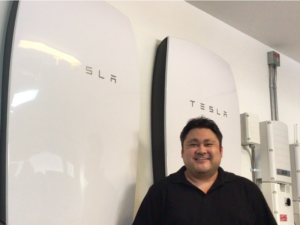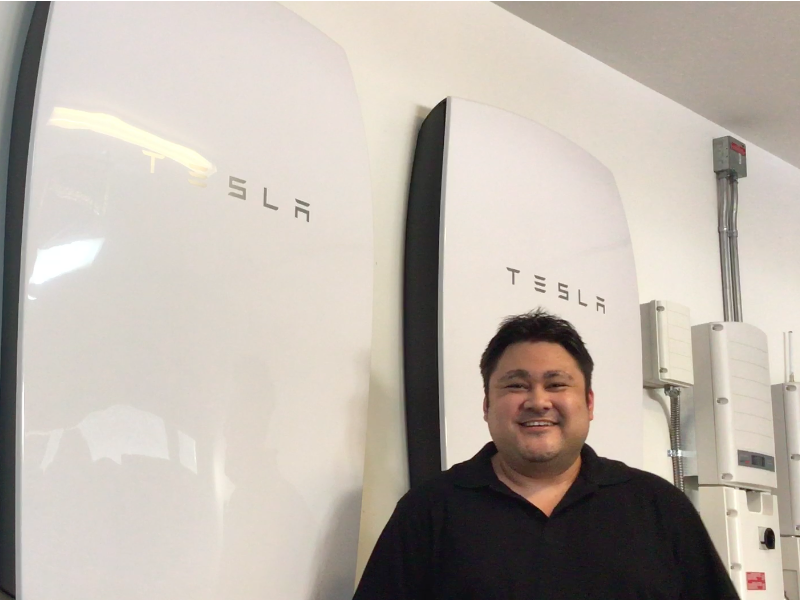
Ever wonder what it’s like take your home virtually off-grid with solar panels and a home battery system? Air traffic controller Bronson installed 36 SunPower panels and two Tesla Powerwall batteries on his Ewa Beach home in October of 2016. So far, the results have been impressive.
Here’s how it works. Electricity generated by the solar panels takes one of three possible paths, but it always prioritizes like this:
- House
- Batteries
- Grid
On a sunny day, solar power runs the A/C, fridge and everything else. Excess power fills the battery. After the battery fills up, all remaining energy is exported to the grid.

When the sun goes down, the batteries kick on, supplying steady power to the home through the night. If the batteries become depleted, grid power comes on to bridge the gap until solar starts filling them up again.
Powerwall made it possible for Bronson to go virtually off-grid. With the right combination of solar panels and batteries; dependence on the utility is almost eliminated. Grid power can be thought of as a backup, there only to provide energy during when cloudy weather impacts solar production.
An important benefit of the Powerwall is its ability to provide backup during a power failure. During the planning process, SunPower by Eco Solar helped Bronson identify two critical circuits that automatically switch on when grid power fails.
In January, Bronson’s system produced 120 kWh more energy than he consumed. As summer months come on with longer days and better weather, his ability to offset grid power will go up even further.
An important note about connecting to the grid:

Bronson’s system was installed under HECO’s Customer Grid Supply (CGS) program, which allows credit for energy he exports. Systems installed under the newer Customer Self Supply (CSS) are not allowed to export; so all energy generated must be consumed or stored.
Systems installed under CGS can potentially be retrofitted with Powerwall in order to achieve greater savings and emergency backup. To find out more, contact us for details.
Why not go completely off grid?
It is theoretically possible in some instances, but it is impractical and cost-prohibitive for average homeowners.
Off-grid means no connection to the grid at all, so you must have enough battery storage to endure many potential days of cloudy weather. You’d also need enough solar panels to fill those batteries.
Bottom line: that’s a lot of costly equipment that takes up a lot of space. If saving money is the goal, going completely off-grid won’t get you there.
Video Testimonial: Bronson M.
“The Tesla batteries were far ahead of the ball game. The efficiency, the longevity, no one even came close.”


